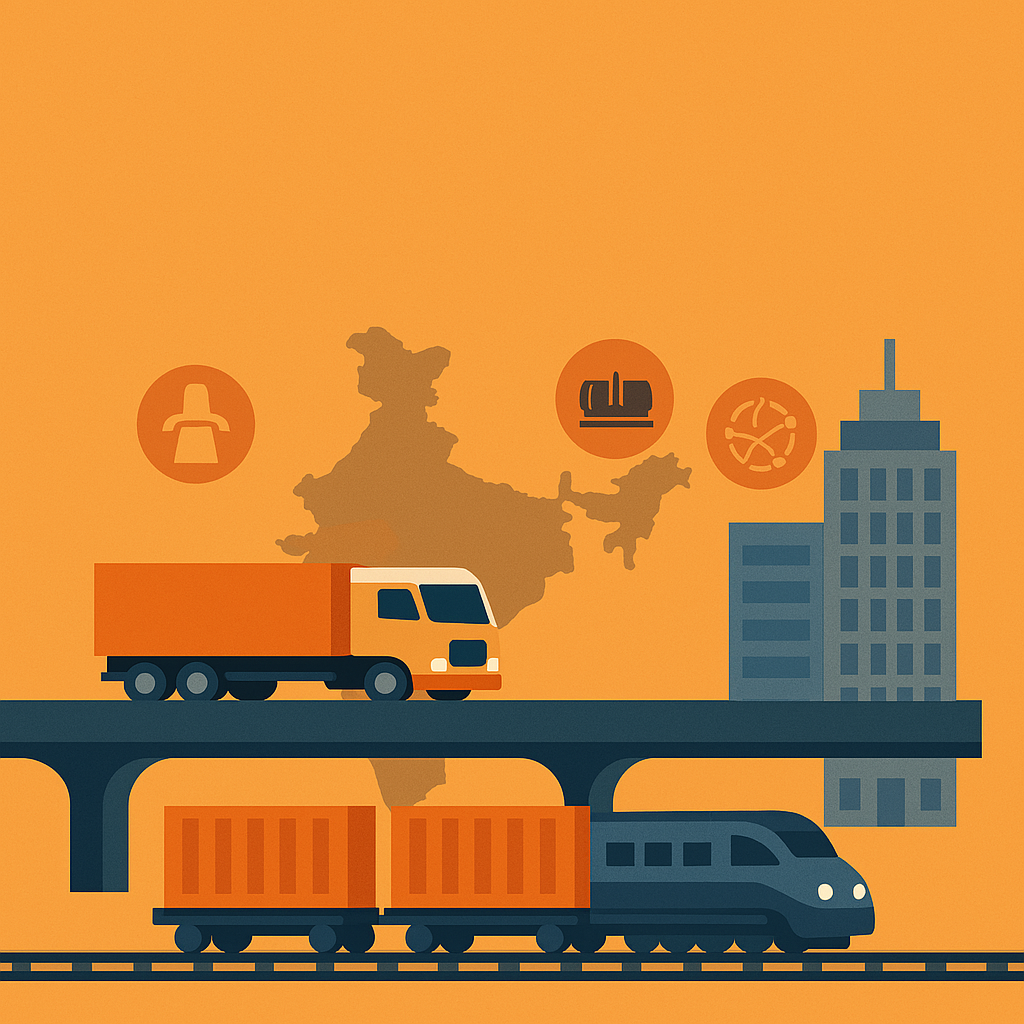India’s logistics sector has long faced challenges such as poor road conditions, outdated warehousing, and infrastructure gaps. However, the nation is making significant strides to address these issues through substantial investments and strategic initiatives aimed at enhancing efficiency and fostering economic growth.
- Extensive Investments in Road Infrastructure
National Highway Expansion: Over the past decade, India’s National Highway network has expanded by 60%, growing from 91,287 km in 2014 to 146,195 km by 2024. This expansion has significantly improved connectivity and reduced transit times across the country.
Bharatmala Pariyojana: Launched in 2017, this ambitious project aims to develop approximately 26,000 km of economic corridors. As of November 2024, 18,926 km have been completed, enhancing the efficiency of freight movement and reducing congestion in urban areas.
Green National Highway Corridors Project: In collaboration with the World Bank, India initiated this project covering 781 km across several states. It integrates eco-friendly technologies, such as the use of plastic waste in road construction and bioengineering for slope stabilization, promoting sustainable development.
- Modernizing Rail Infrastructure with Dedicated Freight Corridors
Eastern and Western Dedicated Freight Corridors (DFC): India is developing dedicated freight corridors to streamline goods transportation. The Western DFC, spanning 1,506 km from Dadri in Uttar Pradesh to Jawaharlal Nehru Port in Maharashtra, is over 93% complete. The Eastern DFC, covering 1,337 km from Ludhiana in Punjab to Dankuni in West Bengal, is fully operational as of April 2024. These corridors are designed to reduce logistics costs and improve transit times.
Operational Efficiency: The DFCs have led to a significant increase in freight traffic. For instance, traffic on the DFC increased from an average of 247 trains per day in 2023-24 to 352 trains per day in 2024-25, demonstrating enhanced capacity and efficiency.
- Development of Multimodal Logistics Parks
As part of the Bharatmala Pariyojana, India plans to develop 35 Multimodal Logistics Parks with a total investment of about ₹46,000 crore. Once operational, these parks are expected to handle around 700 million metric tonnes of cargo, facilitating seamless integration of different modes of transport and reducing logistics costs.
- Increased Budgetary Allocations for Infrastructure
In the fiscal year 2024-25, the government allocated ₹2.78 lakh crore to the Ministry of Road Transport and Highways and ₹2.62 lakh crore to the Ministry of Railways. These record-breaking sums underscore the government’s commitment to reshaping the nation’s transport landscape and addressing longstanding infrastructural challenges.
Conclusion
India’s concerted efforts in investing heavily in road improvements, national highways, and dedicated freight corridors are yielding tangible benefits. These initiatives are not only addressing existing inefficiencies but also laying the foundation for a more robust and efficient logistics network. Such developments are crucial for reducing logistics costs, enhancing economic competitiveness, and driving sustainable growth in the years to come.
For more details, please contact us at: contact@xfrate.com

